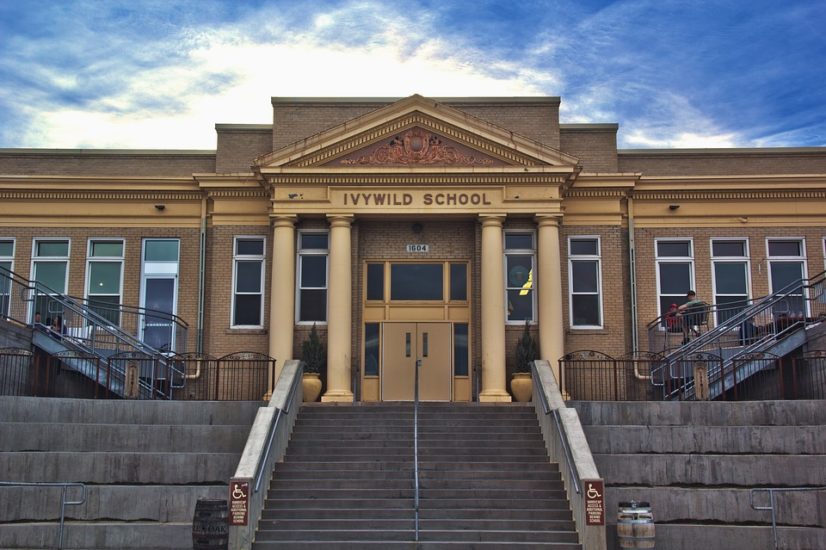For decades, schools have used access control systems to maintain campus safety and security.
Door access control systems for schools should encompass all facilities and the surrounding campus. It should include a tiered access system, limiting points of access, establishing clear entry points and more. These measures are designed to prevent criminal behavior and guard against improper behavior from faculty and students. The best access control systems act as a deterrent and serve as support for daily activities.
A good access control system is based on administrative support and personal responsibility. With this in mind, consider some of the essential features of a typical access control system for schools.
A Tiered Access System
Every school has different areas with respect to providing access. For instance, permitting access to school grounds is a far different proposition than providing access to the school’s security infrastructure.
The first step to developing or evaluating an access control system is to establish a tiered system with consideration toward any necessary security measures for each tier. Once these tiers have been established, they should be visibly and/or physically demarcated.
Although strong measures like security gates may not be necessary for each tier, people should receive an indication when passing from a less-secure tier to a more-secure tier. For example, signs should indicate where people step onto school property.
Doors, signs, barriers, landscaping and other measures can be used to establish different tiers in the physical world. At the very least, physically establishing different access tiers can prevent confusion and misunderstandings.
Clear Entryways
The importance of having clear main entryways seems obvious, but how many times have you walked up to a building and been unable to figure out the main entrance? Having established main points of entry reduces the odds of people entering through side doors or emergency exits, possibly leaving them open for unauthorized access.
The main entry points of buildings should be monitored, whether by staff or by video monitoring. Simply having cameras or staff in place can serve as a deterrent to unauthorized access. In addition to providing security, staff positioned at main entryways is good for customer service, directing visitors and deliveries to the proper destinations.
Limited Points of Entry
As with every other aspect of an access control system, this should be done with practicality in mind. Main entry points should optimize ease of access, while any other access points should be controlled using locks, gates, school entrance security personnel or other control measures.
Emergency exits present a complicated problem for limiting access. Left unsecured, there can be a vulnerability in the system that allows for easy unauthorized access. However, it should be possible to readily open these exits in the event of an emergency. Cameras, alarms and a disciplinary code are all proven measures to keep emergency exits secure outside of emergencies. A walking tour of the school campus is a simple but effective way to identify problematic points of entry and secure school entrance points.
Keycard Access System
Unlike access control for schools that uses physical keys, a swipe card system for schools can monitor, deny access and authenticate access based on individual authorization.
Access to facilities, rooms and secured areas must be granted by an approved administrator or representative. When someone is granted new access, it should be memorialized in proper documentation. Any changes or updates to access should be done as soon as possible and documentation should be updated promptly. If physical keys must be issued for certain access points, there should be policies related to the use of keys and user expectations. Policies should also outline disciplinary actions if they are breached.
Optimized Visibility
While digital access control technology can be extremely effective, many effective security techniques don’t require any 21st-century technology.
Keeping entryways and walkways well-lit and clutter-free is a simple but effective way to deter unauthorized access. Removing objects that block visibility makes it difficult for anyone to carry out malicious activity, making these areas less attractive targets for potential criminals.
Tactically placed school surveillance cameras can also optimize visibility and possibly catch individuals in the process of wrongdoing before damage can be done. Cameras can also be used to monitor areas that see very little foot traffic, such as rooftops and basements.
Robust Policy, Training and Practices
An access control policy for schools begins and ends with personnel. If faculty, security staff and even students do not receive proper instruction on how to prevent unauthorized access, the entire system will be extremely vulnerable.
Access control systems for schools should also be regularly audited. Daily inspections can be used to identify problem areas that are then addressed by administrators. Regular conversations can be used to uncover ongoing issues that have not been addressed.
We Can Provide Your School With a Comprehensive Access Control System
At Taylored Systems, we have decades of experience providing access control and school security and IT solutions for education. Our goal is to give parents, administrators and entire communities peace of mind when it comes to providing a nurturing environment for children.
Whether your school is an elementary school, middle school, high school, or college, we can develop a solution that meets your needs. Please contact us today to learn more about our comprehensive approach to access control systems for schools.

